With social distancing continuing as the norm, an increasing number of businesses are using YouTube Live to host events, workshops, Q&A sessions and more. Does it work? You bet.
In 2020, 70% of people used YouTube to watch online replacements of live events. Moreover, consumers watch live videos for 10-20x longer than pre-recorded videos.
In this article, you’ll learn why YouTube Live should be a part of your video marketing strategy and how to livestream on YouTube successfully. We’ve also included tips on how to use various livestreaming features to create engaging live content.
Let’s get started.
- What is YouTube Live?
- What are the benefits of YouTube Live?
- How to start streaming with YouTube Live
- Livestreaming features to use livestreaming-features
- YouTube Live best practices
What is YouTube Live?
YouTube Live is YouTube’s livestreaming feature, which enables content creators to interact with the audience in real-time via video and chat. Users can watch trending livestreams in their country by clicking on Live from the left-hand sidebar on YouTube via desktop.
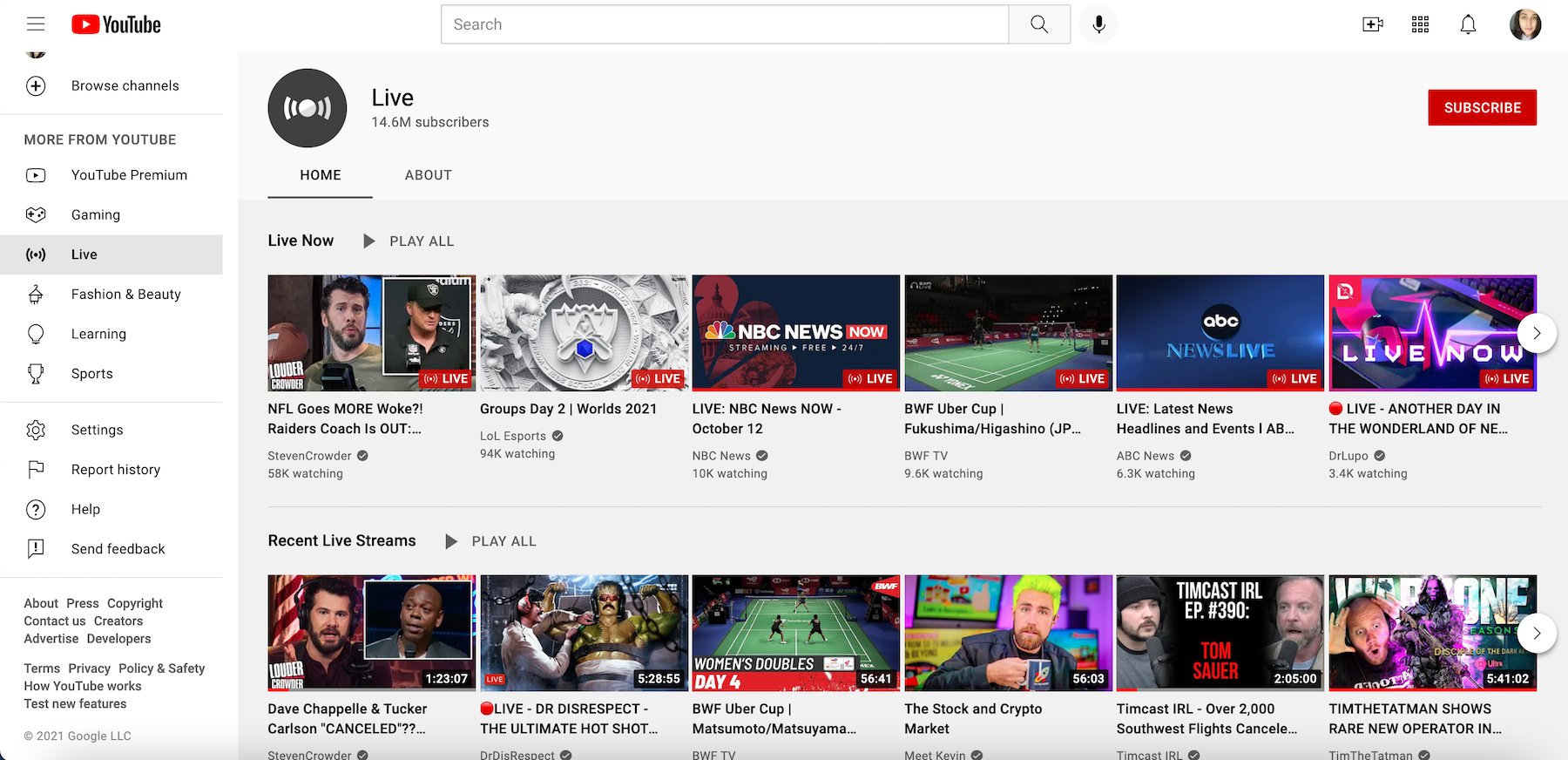
When you go Live, your livestreams can also be displayed on your audiences’ personalized YouTube feeds. This depends on whether they’ve subscribed to your channel, previously watched or liked your content, or interacted with content that’s similar to yours.
What are the benefits of YouTube Live?
YouTube is the second largest live streaming platform in the world, and the website has over two billion monthly active users — that’s more than 6 times the US population.
These statistics alone are enough to convince anyone about the potential of using YouTube Live for expanding reach, growing brand awareness and engaging with a large audience.
As if that wasn’t enough to convince you of the benefits of using YouTube Live as a business, consider:
- Hosting virtual events: Organizing an in-person event can be time-consuming and costly. YouTube Live is an excellent alternative for hosting events like workshops, webinars and product launches virtually at a fraction of the cost. Plus, more people globally can attend your virtual even rather than relying on travel logistics.
- Interacting with your audience in real-time: Livestreaming lets you engage with the online community in real-time. You can ask and answer questions, respond to compliments and even react to humorous comments. Holding a two-way conversation with your audience helps you build stronger connections with them.
- Answering questions instantly: Just as with any in-person even, going Live on YouTube enables you to respond to any questions or comments from your audience instantly and in real-time, which leads to higher satisfaction. You can solve problems, teach a subject and even answer questions about your product — all in a way that feels more personal than responding via email, phone or video call at a later time.
- Standing out from the competition: More than 500 hours of video content is uploaded to YouTube daily. Since livestreams still make up a relatively smaller percentage of that content, they can help you stand out and look unique.
Now that you’re aware of the key benefits of YouTube Live for businesses, let’s talk about how you can start live streaming on YouTube right away.
How to start streaming with YouTube Live
Before you start livestreaming on YouTube, make sure you’ve set up your channel and all your equipment for going live.
1. Enable livestreaming
Before you can go live on YouTube, you need to enable livestreaming on your device or devices.
If you’re using a web browser, follow the steps below:
- Open YouTube in your browser
- Click on the Create symbol at the top

- Click on Go Live
- Verify your channel (if you haven’t already)
- Wait until livestreaming is enabled (this may take up to 24 hours)
If you’re using a mobile device or tablet (Android, iPhone or iPad), follow the steps below:
- Open the YouTube app
- Click on the Create symbol at the bottom
- Click on Go Live
- Wait until livestreaming is enabled (this may take up to 24 hours)
Note: You need at least 1,000 subscribers to enable livestreaming on mobile.
2. Choose a stream type based on your purpose
YouTube lets you livestream using one of three different recording options. Let’s take a look at each one briefly and when to use it.
- Mobile: To go live from your mobile device, such as a phone or tablet, you need to have a verified YouTube channel with at least 1,000 subscribers. This is a good option for vlogging or sharing quick updates on the go.
- Webcam: With this option, all you need to go live is a computer and a webcam. This is useful for simple livestreams that don’t require too many resources. You’ll just be filming yourself or anyone else in front of your computer. For example, you can conduct a quick Q&A session or share your thoughts on a specific topic.
- Encoder: If you want to share your screen in your livestream, or use multiple cameras, microphones and other hardware, you need to choose the encoder option. This is ideal for gaming streams, concerts, business events, podcasts and interactive presentations.
3. Choose a title, description and thumbnail image
You’re almost ready to livestream!
The only thing left to do is choosing a title, description and thumbnail image for your livestream. You want people to be drawn to click on it when they see your YouTube Live video on their feeds.
Below are some best practices when adding your livestream details. These will help ensure you reach a bigger audience, and attract more views and clicks.
- Create an eye-catching title: Well-written titles can mean the difference between someone clicking on your livestream or scrolling right past it. Make sure you write catchy titles that accurately describe your video content yet pique the right amount of curiosity. Also, use strong keywords so your livestreams show up in search results.
- Optimize your description: Just like the title, your livestream description should include important keywords to help it rank higher in search results. You should also add relevant links and information in your description to help your audience understand what they’re watching and where they can go to find out more. Below is a great example of a livestream description from GoPro that checks all the boxes.
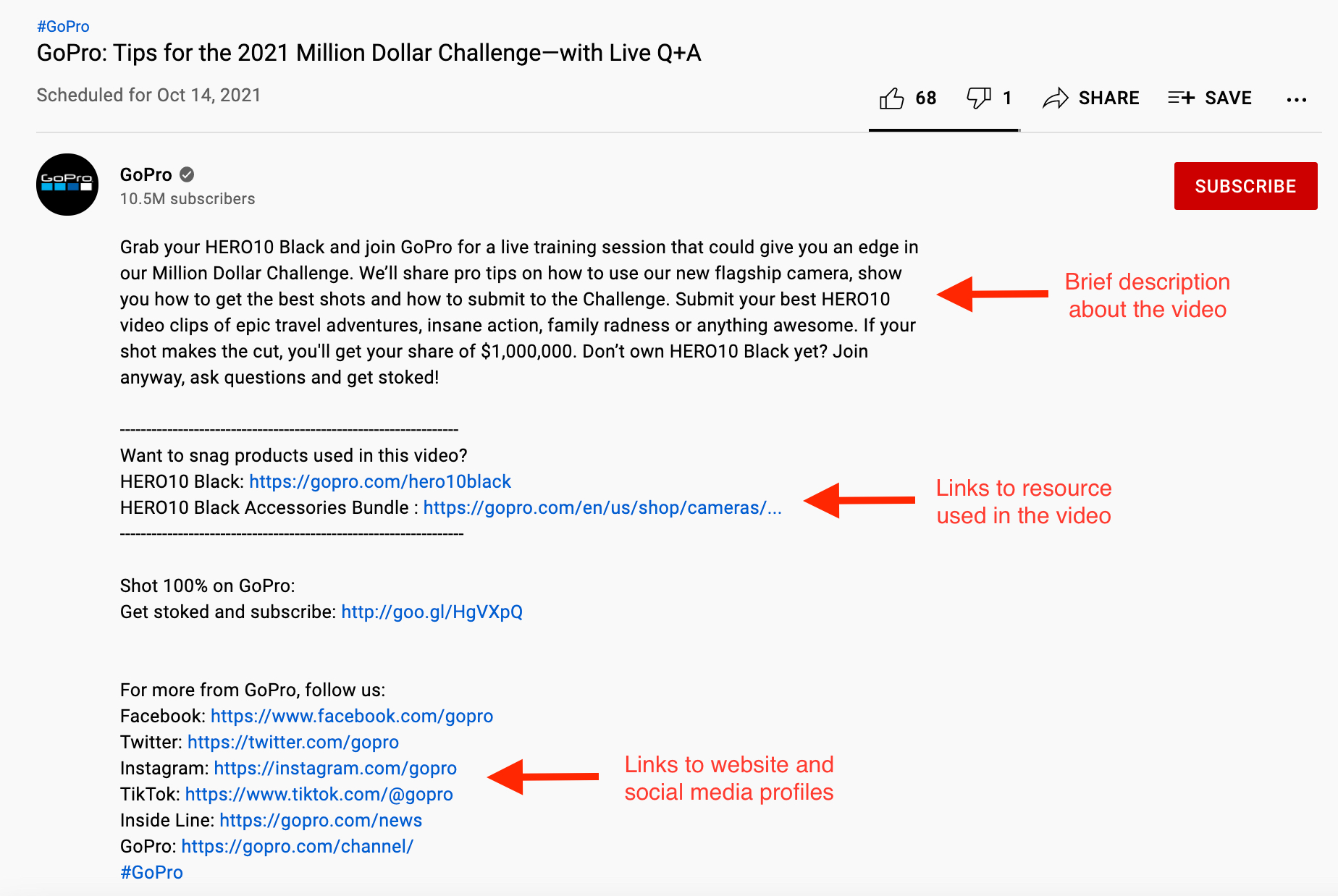
- Design a custom thumbnail: Your thumbnail is probably the first thing your audience sees about your livestream. Make sure it’s worth it by designing a custom thumbnail that captures the essence of your video in an engaging, vibrant manner. The resolution of your YouTube thumbnail should be 1280×720 with a minimum width of 640 pixels.
- Add calls to action: If you want your audience to take any specific actions during or after they watch your livestream, you can add CTAs to your description or within the stream. For example, if you want them to visit your website or social media profiles, a landing page or any other resource.
4. Start livestreaming
All set and ready to go live? Follow the steps below to start (and end) your livestream on mobile, desktop and encoder.
How to livestream on mobile or tablet
- Open the YouTube app
- Click on Create → Go Live at the bottom
- Tap More options to schedule your stream for later and adjust settings for age restriction, live chat, monetization and more
- To share your phone screen, click on Create channel → Share screen
- Tap Go Live to start streaming
- To end your live stream, click on Finish
How to livestream using a computer and webcam
- Sign in to YouTube in your browser
- Click on Create → Go Live in the top-right corner
- Select Webcam from the left
- Add a title and description, and set the privacy
- Select More options → Advanced Settings for additional settings you want to set
- Click on Next to capture a thumbnail with your camera
- Ensure you’ve selected the right webcam and microphone
- Tap Go Live to start streaming
- Click on Edit to adjust settings for privacy, monetization, live chat, add tags and more
- Tap End Stream at the bottom when you’re done livestreaming
How to livestream using an encoder
- Sign in to YouTube
- Click on Create → Go Live to enable livestreaming
- Tap Stream on your left and click on Create Stream
- Install an encoder
- Connect any additional hardware, such as cameras and mics

- Connect your encoder by entering your YouTube Live server URL and stream key
- Start streaming
Google Support has more information if you want to learn more about livestreaming on YouTube using an encoder.
Note: For users aged 13-17, the default privacy setting is set to Private or Unlisted (for mobile.) This means the stream is not going to show up in search results or recommendations. For users aged 18+, the livestream’s privacy will be set to Public by default.
5. What you can and can’t stream on YouTube Live
The content of your livestream should adhere to YouTube’s Community Guidelines and Terms of Service. If you fail to meet the guidelines, YouTube may restrict your content or remove it from the platform altogether.
Additionally, a restriction on your livestream may result in a strike on your YouTube channel, which can prevent you from going live for 14 days.
Livestreaming features to use
Now that you know how to start a livestream on YouTube, let’s talk about the various features you can use to enhance, promote, analyze and monetize your livestream effectively.
1. Create a highlight
YouTube allows you to take short snippets from your livestreams and turn them into highlights to post as standalone videos on your YouTube channel.
This is especially useful for livestreams that cover a lot of different topics, such as a video podcast or a Q&A session. You can create multiple highlights, each focusing on a specific topic or question.

When you post a highlight on YouTube, it will appear on your channel just like a regular uploaded video.
You can create highlights during or after your livestream. If you want to mark interesting moments while you’re still live, simply add stream markers to pinpoint the exact minutes. You can view these stream markers on your video timeline later to easily create highlights.
2. Track your live stream’s metrics
A useful feature of YouTube Live is the ability to track the real-time performance of your livestream on all three devices; mobile, tablet and desktop. This enables you to quickly detect and fix any issues, and analyze your engagement.
There are three main types of analytics you can track:
- Stream health: This will notify you of any potential issues with your livestream so you can quickly rectify them to avoid a dip in viewer count.

- Real-time analytics: During your livestream, you’ll be able to track metrics like your stream’s total duration, total viewer count and total likes. If you’re on desktop, you can also view the chat rate, total playbacks and your stream’s average watch time.
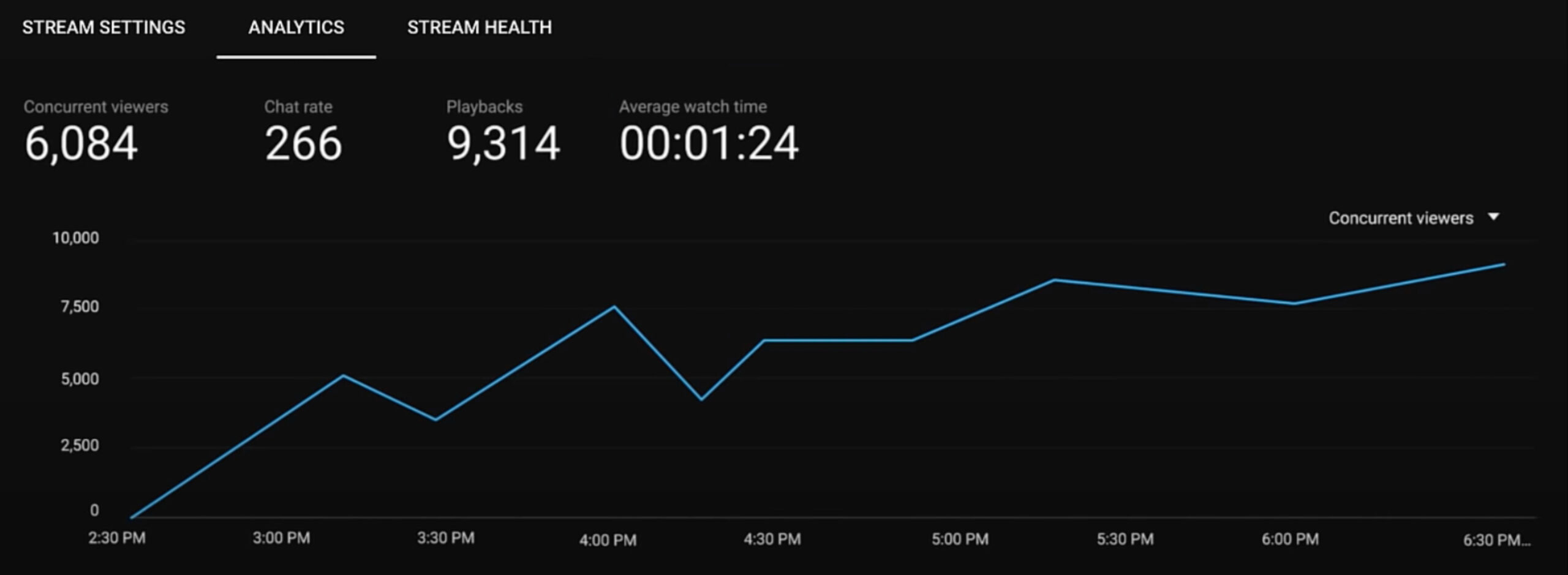
- Post-stream analytics: After your livestream ends, you’ll get a quick summary of how your stream performed. This includes the total playbacks of your stream, the average watch time, the peak times and the number of new subscribers you gained through the stream.
You can also use YouTube Analytics to view an in-depth report on your audience retention, demographics, traffic sources, playback locations and other metrics.
3. Premiere a new video
Premiering a video on YouTube lets you watch the video with your audience in real-time.
Unlike livestreams, video premieres are not exactly live. They are videos that are uploaded and scheduled to be played at a certain time with live chat and other interactive features. So while it’s not live per se, in terms of recording, it is an interactive experience with your audience in real-time.
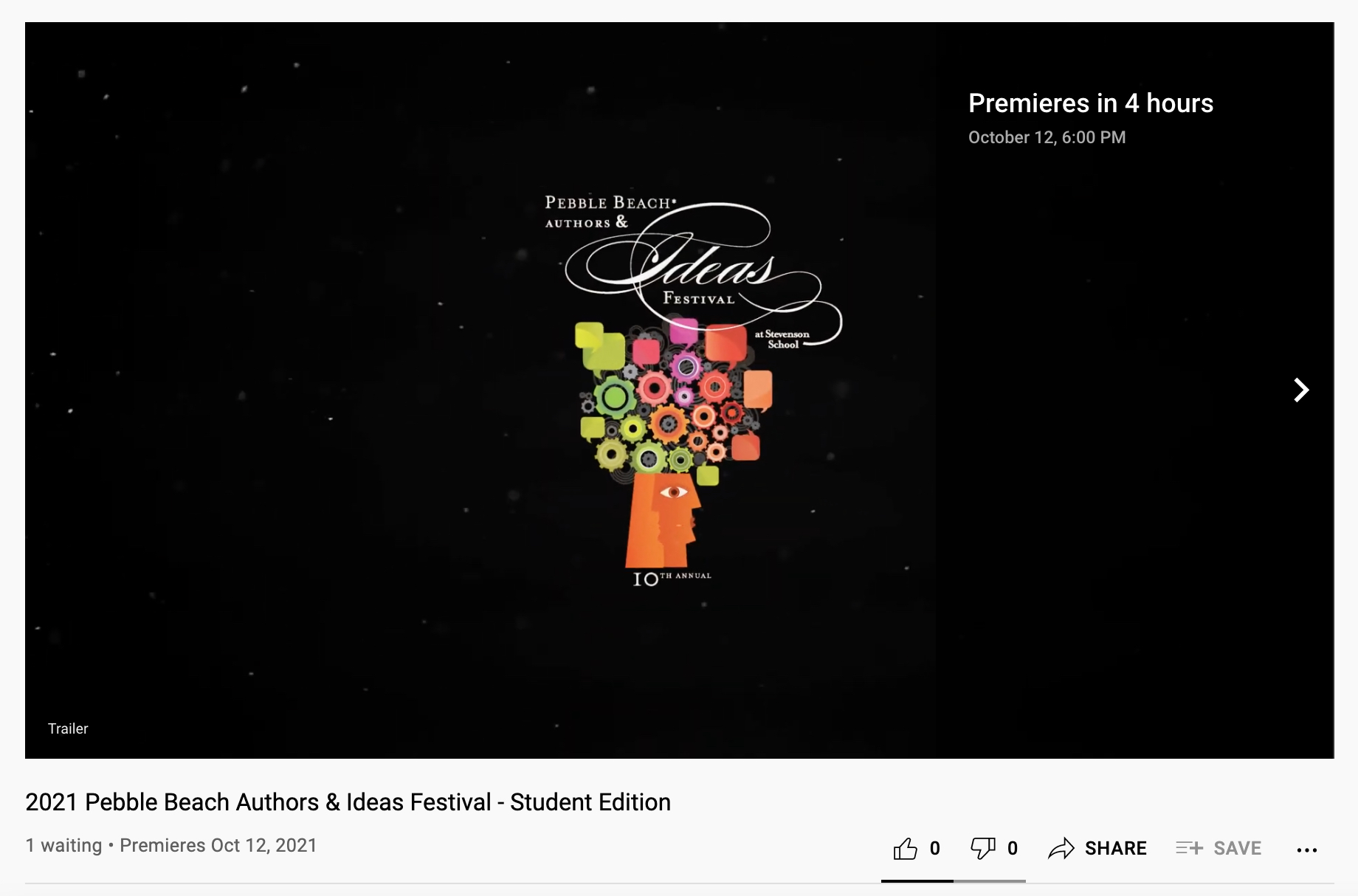
Here’s how you can premiere a video on YouTube:
- Sign in to YouTube
- Click on Create → Upload video
- Select the video you want to upload and edit its details
- To immediately premiere a video, go to Save/Publish → Public → Set as Instant Premiere
- To schedule the premiere for later, tap Schedule, select a date and time and click on Set as Premiere
- Click on Done or Schedule
Once you’ve set up a premiere, a watch page will be created for your video on your YouTube channel, just like other uploads. Viewers will be able visit the watch page to set reminders, leave comments and even use Super Chat if it’s enabled.
Once the premiere is over, the video will stay on your channel as a regular upload.
4. Turn on DVR on livestreams
YouTube’s Digital Video Recording (DVR) feature allows viewers to pause, rewind and continue watching your livestream.
Here’s how to enable DVR on your livestream:
- Go to YouTube Studio
- Click Create → Go Live
- Tap Stream on your left to start livestreaming or click Manage to schedule for later
- From the dashboard, tap Enable DVR
YouTube’s DVR feature also comes with a few limitations, including seek back limitations depending on Latency of livestream rights.
You can disable DVR from Advanced Settings if you want viewers to only watch your stream live. Disabling DVR restricts viewers from going back to a specific time in your stream, until the stream ends.
5. Show a trailer
As a way to promote your YouTube Live event, consider showing a trailer. Trailers can be 15 seconds and up to 3 minutes long, and they play on your channel’s watch page before your Live event to create hype and interest.
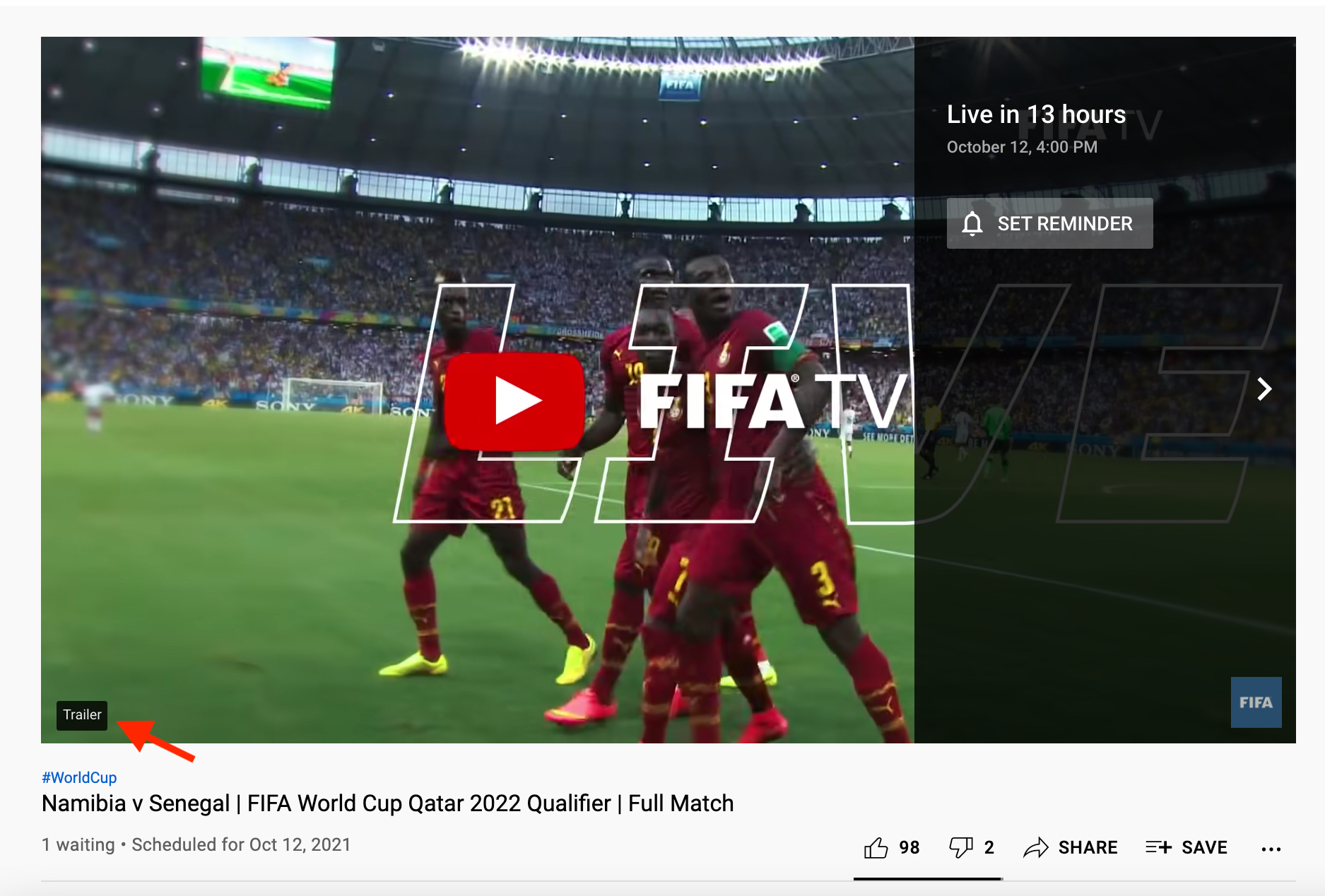
To upload a trailer, follow the steps below:
- Go to YouTube Studio and select the video you want to upload
- In the Visibility tab, schedule the video as a Premiere
- Click on Set up Premiere
- Tap Add under Add a trailer to choose your trailer
Note: This feature is only available to creators with more than 1000 subscribers and no Community Guideline strikes.
6. Monetize your livestream
One of the benefits of going live is the ability to money off of your streams. There are several ways you can monetize your YouTube livestreams:
- Ads: Running ads on your videos is a great way to earn some extra revenue. YouTube allows you to run pre-roll, mid-roll, display and overlay ads on your livestreams. Learn more about how to enable ads in YouTube Live.
- Super Chat: Enabling this feature allows your viewers to purchase chat messages to better connect with you. When someone sends a Super Chat, their message will highlighted or pinned at the top of your chat feed, making them feel exclusive.
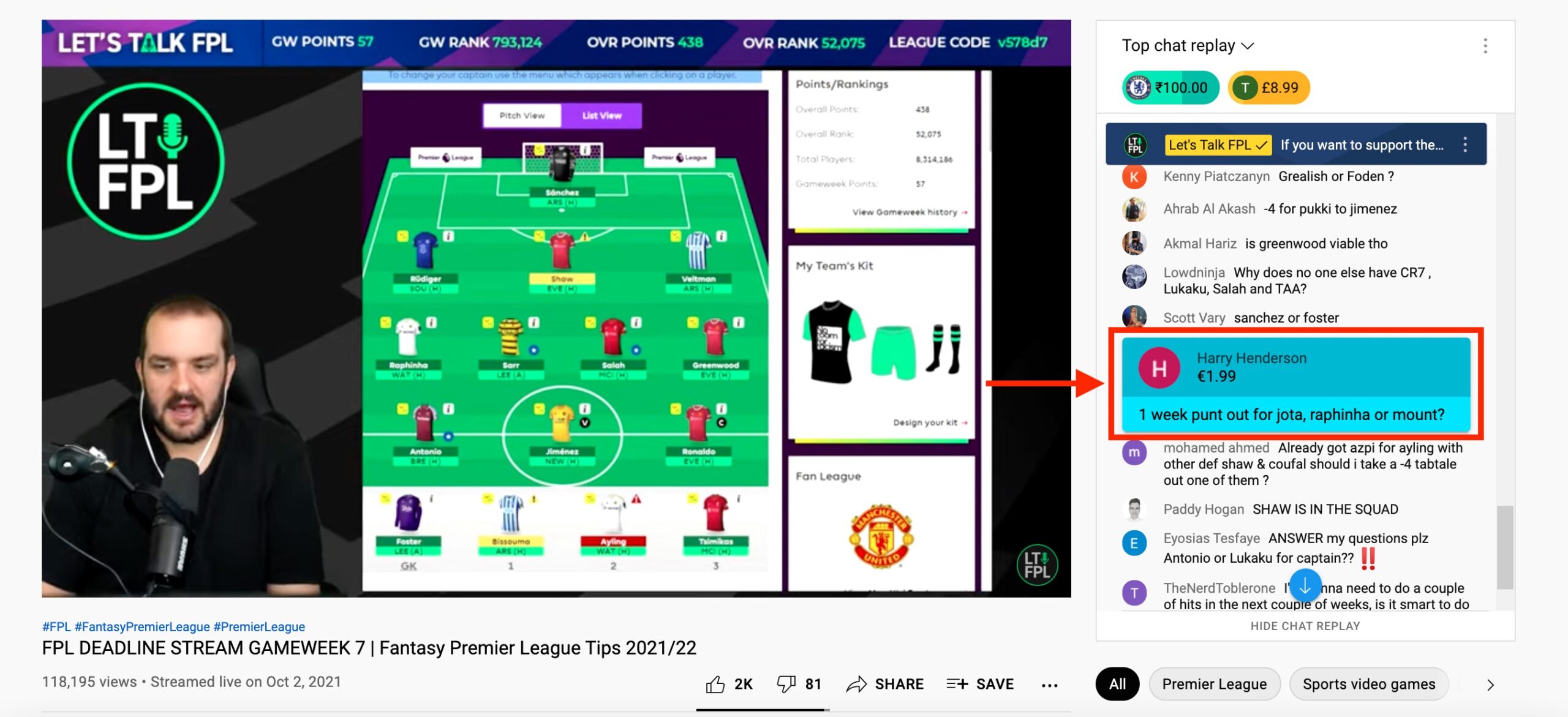
- Super Stickers: Similar to Super Chats, Super Stickers are exclusive stickers that users can purchase and share within the livestream chat feed to better express themselves. You can activate or deactivate Super Chats and Super Stickers if your channel or video is eligible.
- Channel Memberships: Your subscribers can become members of your channel by paying a monthly fee. Most creators offer members-exclusive perks like custom emojis, members-only live chat and loyalty badges as an incentive to join. If you’re looking to grow your YouTube following, this may be a good feature to consider as a perk to your viewership.
Note: To enable monetization on YouTube, you need to meet the minimum requirements of the YouTube Partner Program (YPP). Once you’ve been accepted into the YPP, you’ll get access to various exclusive features, including monetization.
7. Manage live chat & captions
YouTube gives you several options to manage your Live chat to ensure a safe, comfortable environment for all viewers.
Some Live chat features include:
- Turn Live chat on or off
- Make your Live chat subscriber-only or members-only
- Review or block chat messages with certain words
- Assign moderators to respond to or remove messages
- Turn on “Slow Mode” to restrict the timing between chats
You can also choose to display a live chat replay alongside your video after your livestream has ended so people can view the conversation.
Another useful feature in YouTube Live is the ability to add captions to your livestreams — visual displays of the audio content in your videos. It’s recommended to have live captioning to your videos for users who prefer to listen without sound but more importantly for users who are hard of hearing to be more inclusive of a wider audience.
You can either take advantage of automatic captioning, embed captions in your video or send them to YouTube through supported software.
YouTube Live best practices
Armed with these features, you’re ready to go live and engage with your audience!
But before you grab your equipment and start streaming, remember these best practices below to ensure your livestream is a raging success.
- Check your network connection: It’s important to have a reliable internet connection to prevent a broken stream. So, run a speed test before you go live to avoid any issues.
- Test your equipment: Make sure your webcam, microphone and any other equipment is fully functional before you go live to avoid any embarrassing moments.
- Promote your livestream: Schedule a premiere, upload a trailer and share your link on social media to spread the word about your livestream. You can also promote your YouTube channel to attract more visitors to your livestream.
- Write a script: Going Live can be a nerve-wracking experience for even the most confident speakers. To avoid making clumsy mistakes that you’d rather keep off-air, always have some notes ready or a script prepared for your stream.
- Stay safe: Be careful about sharing personal information during livestreams. Take advantage of YouTube’s safety and moderation features to ensure a safe and comfortable environment for your audience.
Use YouTube Live to deliver interactive audience experiences
Livestreaming is a unique way to engage with your audience on a personal level, regardless of where they are located. From hosting live events to workshops to Q&A sessions to product launches, you can use YouTube Live to grow your business in tons of different ways.
To make the most out of your live videos, check out 10 ways to repurpose your livestreams and use them to create other types of online content.
The post The complete guide to YouTube Live in 2021 appeared first on Sprout Social.
from Sprout Social https://ift.tt/3HGCJ0e
via IFTTT
No comments:
Post a Comment